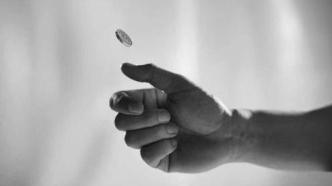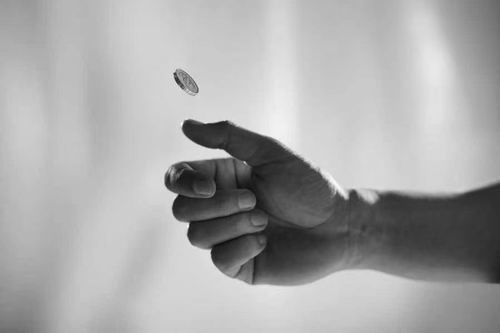

Image source: Image Source Trading Ltd/Shutterstock
If you toss a coin, the probability of getting heads or tails is equal 50%—and while statistics textbooks will tell you so, there is growing evidence that in the real world, this is not true.
In 2007, researchers theorized that when a coin is flipped, a person's thumb causes it to wiggle slightly, resulting in a 51% chance of one side facing up.
Now Frantisek Bartos of the University of Amsterdam in the Netherlands and a team of 49 others have conducted the strongest test yet of this theory. He recruited dozens of friends and colleagues to participate in a marathon coin tossing contest.
"When you sit in a room with friends, listen to music, chat, some watch movies together, some flip coins for 12 hours, it's actually much more enjoyable than you think," Bartos said.
The research team tossed coins of 46 different currencies and denominations 350,757 times and recorded the coins before and after they flipped. These findings support the original study: the coin is likely to land on the side it started on 50.8% of the time. Recently, relevant results were published on the paper preprint website arXiv.
Crucially, the team found huge differences between individuals. One person's probability of landing the coin on the starting side is 60.1%, while the other person's probability is only 48.7%. The researchers say different people produce different off-axis rotations when tossing a coin, causing the coin to wobble and thus create a larger same-side bias.
Márton Balázs, a professor at the University of Bristol in the United Kingdom who was not involved in the study, said that from a probability perspective, coin tossing is an abstract concept, but in fact coin tossing is a "complex physiological and psychological process."
"The ideal coin is an abstract concept, and there is no ideal coin in real life," Balázs said. "It's a complex process, so there are deviations. Although this deviation seems relatively small, only a few percentage points, it Still exist."
Anyone looking for truly random results should avoid using the coin toss, Balázs said, but even using a computer won't be truly random because it can't generate random results without repeating patterns. Anyone looking for truly random results must rely on sampling chaotic systems, he said.
Although the findings suggest some bias in coin tossing, Bartos said it can still be used in everyday decisions as long as both parties don't see the coin's starting state.
Related paper information:
https://doi.org/10.48550/arXiv.2310.04153
Good stuff Thanks a lot. casino en ligne This is nicely put. ! casino en ligne Superb facts, Thanks a lot! casino en ligne Amazing a lot of excellent material! casino en ligne You have made your stand quite clearly!. casino en ligne You definitely made your point. casino en ligne Whoa a lot of amazing information! casino en ligne Really loads of superb material! casino en ligne You actually expressed this adequately. casino en ligne Nicely put, Appreciate it! casino en ligne